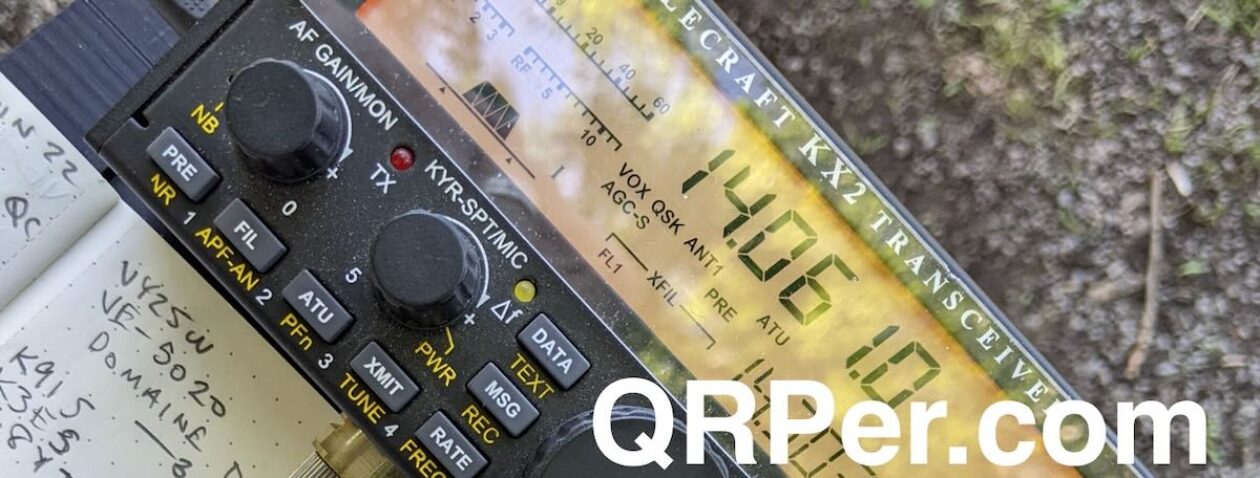 In the latter part of the morning on Thursday, June 15, 2023, I hopped in my car and started the drive back to my QTH after spending a couple of days helping my parents in Catawba County, NC.
In the latter part of the morning on Thursday, June 15, 2023, I hopped in my car and started the drive back to my QTH after spending a couple of days helping my parents in Catawba County, NC.
I had a window of about three hours where I knew I could fit in a POTA activation or two.
I’m quite familiar with POTA landscape along this particular corridor of western North Carolina, so I starting considering my options. I could have easily hit South Mountains State Park, Lake James State Park, and/or Table Rock Fish Hatchery, but what I really wanted to do was a little SOTA (Summits On The Air).
The problem, that particular day, was that the AQI (Air Quality Index) wasn’t great–not ideal for a strenuous hike, so I quickly dismissed that idea. The skies, in fact, were a bit hazy from the forest fire smoke blowing down from northern Canada.
Then it dawned on my that I could drive to the summit of Dogback Mountain (W4C/EM-066) and perform not only a SOTA activation, but a POTA two-fer as well since the activation zone is also in Pisgah National Forest (K-4510) and Pisgah Game Lands (K-6937).
In truth, I don’t do a lot of drive-up summit activations because, typically, when I want to do SOTA, I also want to hike. But drive-up summits are ideal on days like this when either weather is questionable, or the AQI is high.
The drive
 If you live near western North Carolina, Dogback Mountain is a must. It’s one of the few sites I go to that I enjoy the drive as much as the activation.
If you live near western North Carolina, Dogback Mountain is a must. It’s one of the few sites I go to that I enjoy the drive as much as the activation.
As I mentioned in my previous Dogback field report, the road to the summit is a Forest Service road that has a very backcountry feel to it. It’s not maintained regularly, so you can expect washboarding, deep ruts, large exposed stones, deep potholes and wide mud holes.
This isn’t a road I’d recommend for someone driving a sedan or minivan (that said, many years ago I did take a minivan up this road–made for a dodgy drive). Your vehicle would benefit from some proper ground clearance and, ideally, all-wheel drive or four-wheel drive.
Frankly, I absolutely love driving this road because it’s passable most of the year, offers up amazing views, and has a number of dispersed camping spots (or POTA activation sites–!) along the way.
I drive backcountry roads routinely, so this is pure fun for me.
Dogback Mountain (W4C/EM-066)
 The summit of Dogback Mountain is pretty much right on the forest service road. There are two pull-off parking areas on either side of the summit and both are well within the activation zone. In theory, you could set up your portable station along the road and do the SOTA activation there.
The summit of Dogback Mountain is pretty much right on the forest service road. There are two pull-off parking areas on either side of the summit and both are well within the activation zone. In theory, you could set up your portable station along the road and do the SOTA activation there.
Note: Unlike POTA, the SOTA program does not allow mobile activations. If you activate a drive-up summit, you still need to set up a portable station that in no way uses your vehicle for support.
I parked my car (turned on my video camera for the activation video below) then walked the very short path to the true summit. Continue reading Backcountry Drive and Beautiful Views: SOTA and POTA QRP combo on Dogback Mountain!




















































